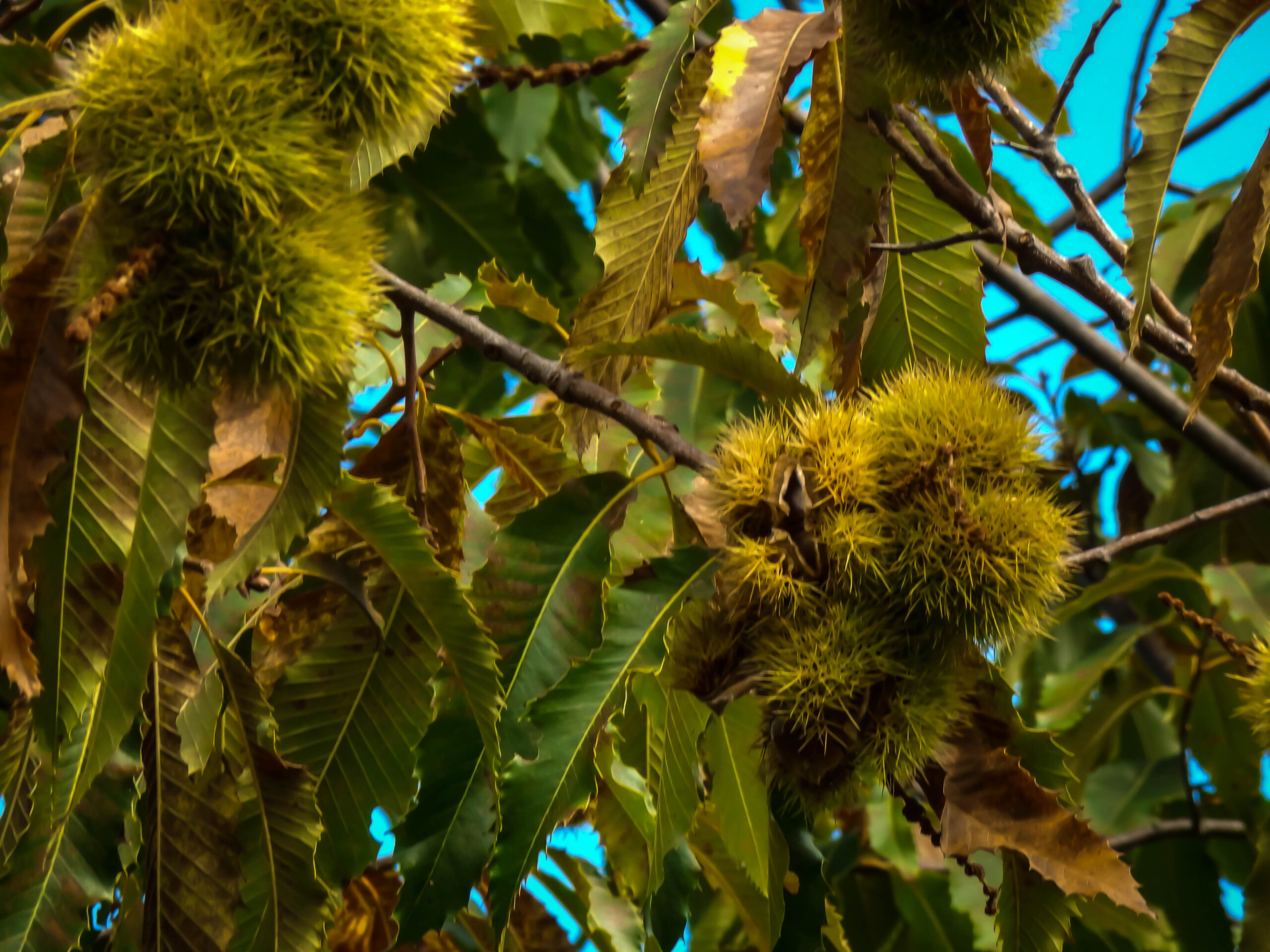
“Under a spreading chestnut tree…”

I probably should have gone with “Chestnuts roasting over an open fire. Jack Frost nipping at your nose” because we are in the holiday season, but I memorized the Henry Wadsworth Longfellow poem for a class in elementary school and still remember most of it. Also, there was a Rocky and Bullwinkle cartoon where Bullwinkle parodies the classic poem. That tipped the balance in favor of “Under the spreading chestnut tree, the village smithy stands.”
For thousands of years, the dominant life form on the North American continent was the American Chestnut tree. It grew to over a hundred feet tall and as much as fifteen feet in diameter. It covered the entire eastern portion of America. One of every four trees in the east was an American Chestnut. Its rot resistant and sturdy lumber was used by Americans from birth to death. They made cradles and houses and coffins primarily out of Chestnut lumber. The nuts provided an enormous food source for people and wildlife. When the Chestnut Blight was accidentally introduced to America on Asian chestnut trees from Japan, the result was the largest ecological disaster ever. That’s not just my opinion. I have read that comment from numerous sources.
In fifty years, the entire Chestnut population was wiped out and the tree became functionally extinct. The Chestnut Blight is caused by a fungus that doesn’t affect the ability of a tree to sprout but kills it after it gets to sapling size. After one hundred years, there is still root stock of American Chestnut alive in the wild that continue to shoot up small trees that eventually die. The fungus is now so widely spread that only a blight resistant tree has any hope of surviving long.
Backcross Program
In 1983, a group of scientists started a project to cross American Chestnut trees with the blight resistant Asian chestnuts. The resulting generation of trees would be 50 percent American Chestnut, and some would have the gene to be drought resistant. Flowers from those trees would be pollinated with pure American trees and this third generation would be 25 percent American. The third-generation trees who showed resistance to the blight would be crossed with pure American trees. The plan was to continue backcrossing like this until the project produced trees that were 99 percent American but had the Asian blight resistant gene.
In 2013, I joined a team of volunteers at the Tyler Arboretum in Ambler, Pennsylvania to harvest nuts from an orchard of third and fourth generation trees and planting new trees at Tyler Arboretum and at one of the Natural Lands Trust sites. Tyler is one of the oldest and largest arboreta in the northeast United States. Together with its neighbor, Ridley State Park, it is the largest contiguous natural area in mostly suburban Delaware County. Natural Lands Trust is a non-profit organization that protects open space by acquiring and caring for large multi-use tracts. The many NLT preserves have provided abundant proof that farming, hiking, biking, fishing, and hunting can co-exist with wildlife preservation.
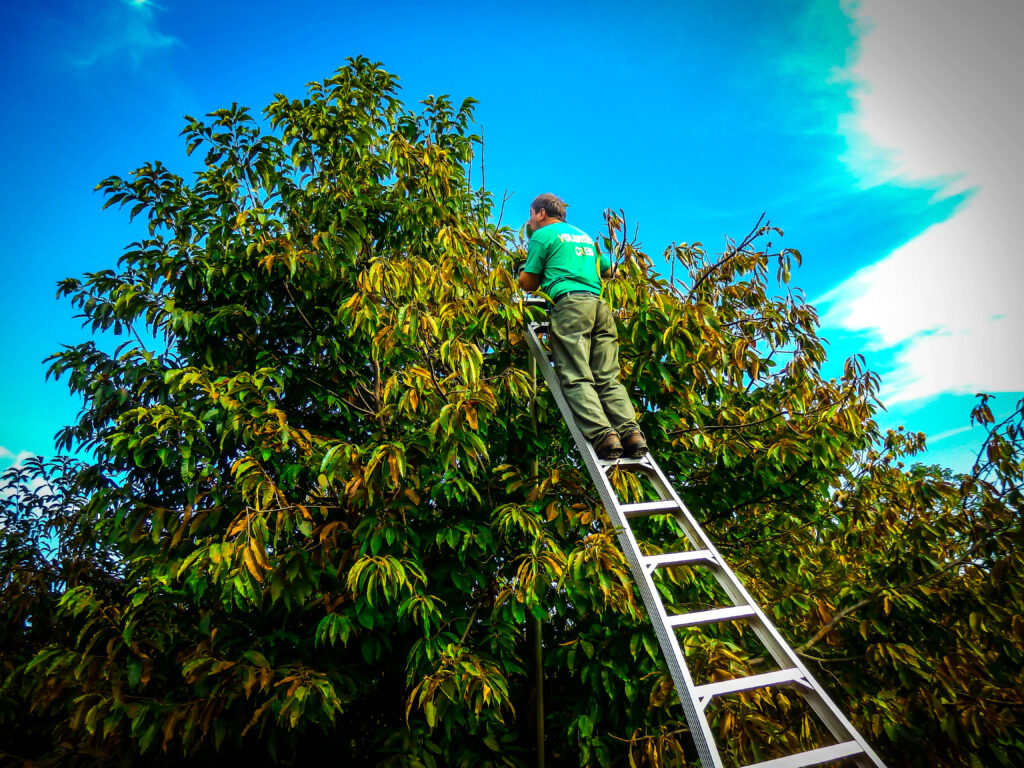
I stopped volunteering after a year because I started thinking about the final result. After success, when we finally had millions of seeds that fit the goal of 99 percent American and blight resistant, what were we going to do with them? Replant the landscape that has already become filled with other trees, especially oaks? Well, actually, yes. That is the plan. But at the time, I stopped buying into it.
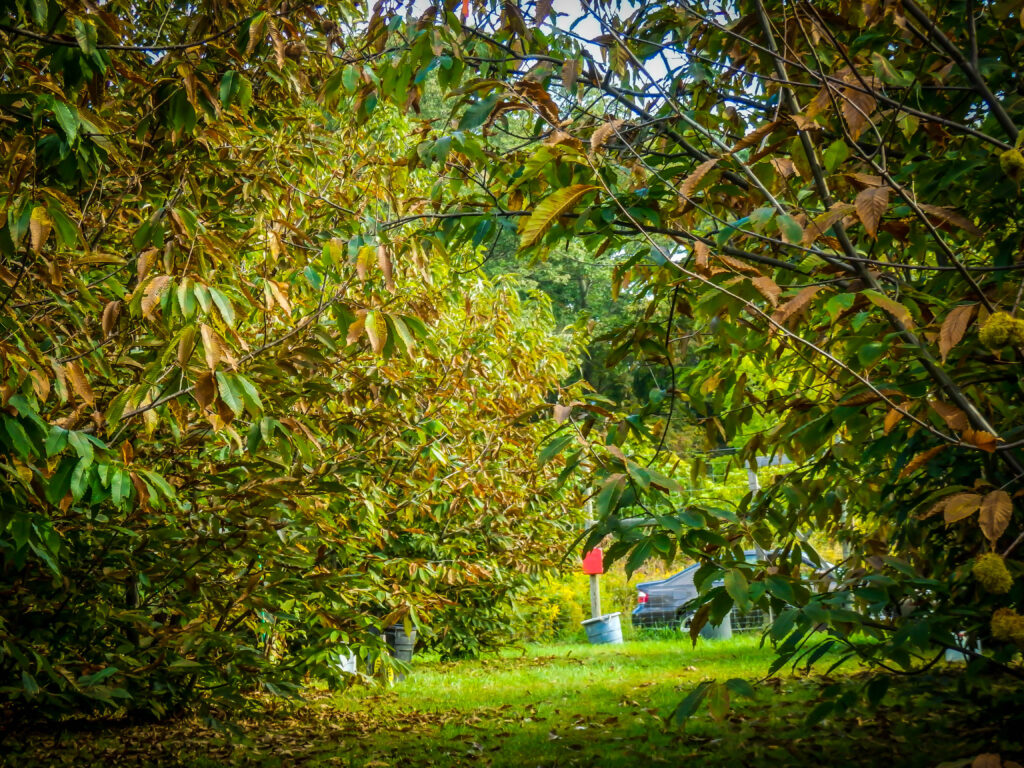
A Midwest miracle
Last summer, Chris and I were visiting the University of Wisconsin Arboretum in Madison, Wisconsin (our daughter Rachel and her husband Matt live in Madison) and I was confused to see healthy, fully mature American Chestnut trees growing there. I thought it had to be a mistake. The trees were clearly labelled and had started growing well before the backcross program had started. Every account that I had read indicated that the trees were extinct. Had the blight missed some of them? It had. When settlers from the east started populating the Midwest in the 1800s, they brought some of their cherished Chestnut trees with them. The eastern forest was contiguous and when the blight started there, it spread throughout the entire east. The Midwest plantings were isolated from the eastern forest by hundreds of miles of grasslands and so the blight never reached some of the isolated groves. The trees at the UW Arboretum were some of these fortunate trees. Needless to say, the arborists at UW are taking special care to avoid these special trees from coming in contact with the fungus.
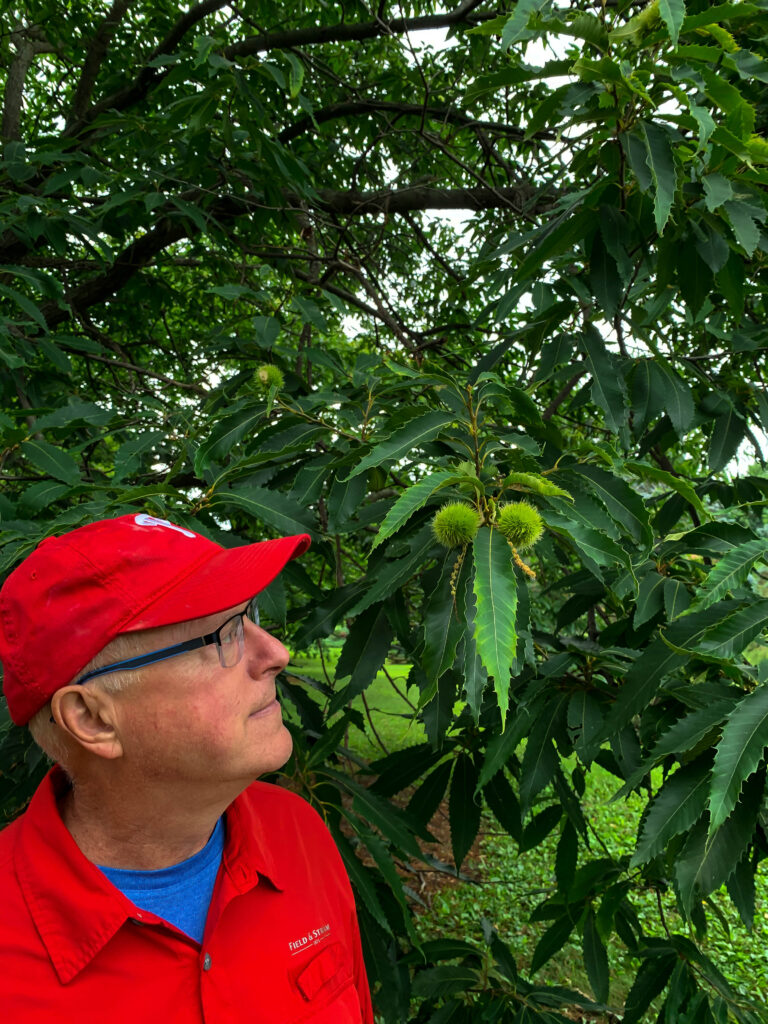
A scientific miracle
In 2001, at the State University of New York in Syracuse, a different kind of project was started to recover the American Chestnut. The researchers discovered that it isn’t the fungus that directly harms the trees. It is a chemical substance secreted by the fungus that does the damage. The bad actor is called oxalic acid. The Asian trees protect themselves from the acid by manufacturing an enzyme called oxaliate oxidase, or OxO, that breaks down oxalic acid. American Chestnuts lack the gene that produces the enzyme. Other plants, besides Asian chestnuts, make this enzyme. The new approach was to splice the required gene found in wheat into an American Chestnut. The process worked! The new trees grew to maturity and were resistant to the blight. Even better, the gene was passed on to future generations. The result was a blight resistant tree that was more than 99.99 percent pure American Chestnut.
Not everyone was happy. Many people are concerned about releasing into the wild a scientifically engineered plant, even if it is almost completely natural. There are lots of cases where scientists have done things that they considered safe and released something – either accidentally or on purpose – to cause an environmental catastrophe. The Gypsy Moth. Rabbits in Australia. Rainbow trout in American rivers. Oh – don’t forget the most recent screw up – the Covid 19 virus.
Additionally, some analysts are concerned that the gene-spliced American Chestnut is a trojan horse for the lumber industry. The fear is that the project will succeed; the new seeds will be safe and the introduction of the new trees will be successful. That could pave the way for different gene-spliced trees that grow faster or have superior disease resistance. Eventually, tree companies could replace all of our native stock of trees with engineered tree farms. That’s a valid concern.
A happy ending, I think
After years of study, the USDA put out the proposal to approve the gene-spliced trees for wide scale planting in the wild. They closed the period for public comment in October of 2020. As recently as May of 2021, I found articles discussing the pending decision of the USDA, but I didn’t find any articles that stated clearly what the decision was. I found something else instead.
I found advertisements to buy American Chestnut trees! I called one company (BulbsnBlooms, P. O. Box 609, Biglerville, PA 17301. Text at (864) -523-7151. Website is BulbsnBlooms.com) to find out whether the trees are from the backcross project or the gene-spicing project. The trees are the gene-spliced variety and I bought two of them for under thirty dollars each. They haven’t come yet, but they are supposed to be seven feet tall. I kind of doubt they will be that big. I don’t care. I can’t wait to plant them. This year, we put in an American Elm (a similar story, my tree is a Dutch Elm Disease resistant variety) and two Redbud trees (from the Redbud Native Plant Nursery in Media, Pa. (610)-892-2833. redbudnative.com), so the property is filling up. We have two spots already picked out for the two new trees. I’m hoping that in a few decades I will be able to stand under my own spreading chestnut tree. And if I don’t get to do it, someone else will be able to do it for me.
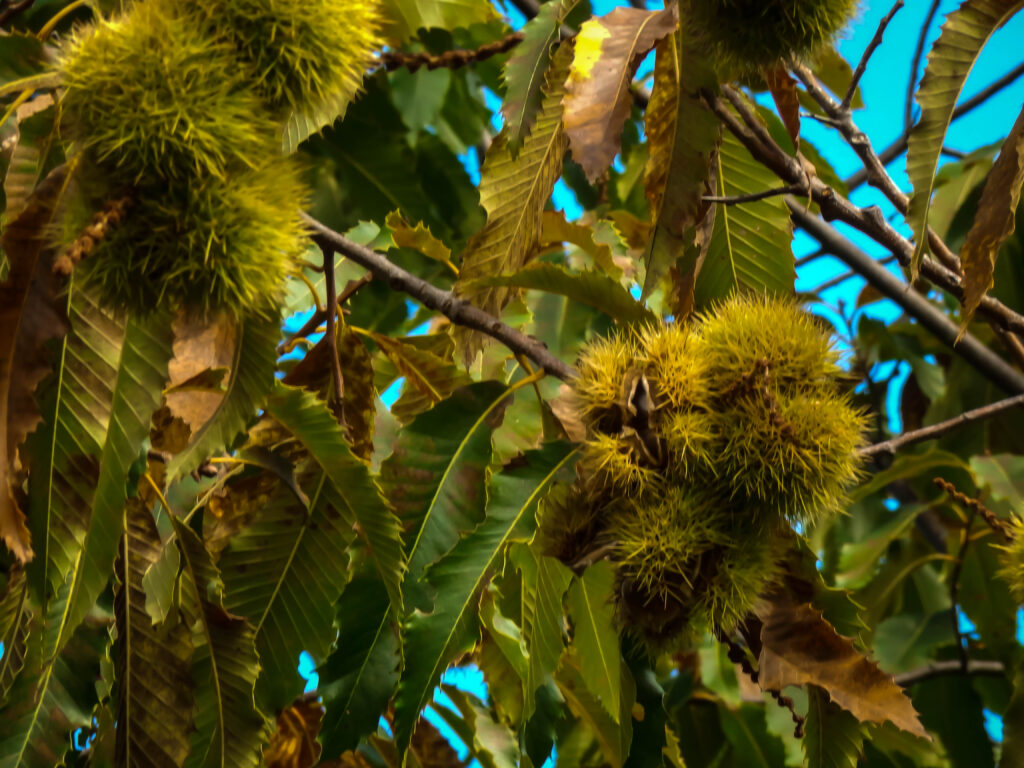
Seven years from now, we will be able to take this pic in our own backyard.